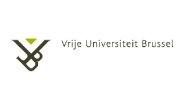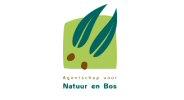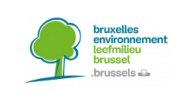Objectives
Activities on the SONIA site focus on spatiotemporal estimation and monitoring of water and energy fluxes in urban areas and forest ecosystems.
Previous experience has shown that shortwave infrared data, especially in the region of 1.3-1.9 μm, are particularly useful for spectral identification of urban materials and vegetation ecotopes. Hyperspectral imagery, with a high spectral (0.4 to 2.5 μm) and spatial resolution (1.5m), is ideally suited for accurate land-cover mapping and for the assessment of important structural and (bio)physical characteristics of vegetative and non-vegetative spaces within the frame of urban ecosystem research.
Through a coupling of detailed surface characterization, derived from high resolution hyperspectral APEX data, with medium resolution thermal data from ASTER, the impact of the urban composition and structure on the thermal behavior of the urban landscape will be analyzed with emphasis on possible implications at the level of urban planning. Based on various Earth observation sources relevant area-specific input parameters (LAI, interception, etc.) will be determined, aiming at improved hydrological modeling. Particular attention will be paid to the estimation of evapotranspiration of (forest) vegetation, making use of the thermal bands of ASTER. The very high spatial resolution and area-covering nature of the Pleiades data will form a complementary resource for identification and detailed analysis of both vegetation (at crown level) and urban elements. Combination of data on water use and crown damage will provide important information on the general evolution of the state of health of the forest.
The SONIA site covers an urban transect ranging from the 19th century neighborhoods in the eastern part of the Brussels Capital Region to the green residential area in the southeast, including the upstream portion of the Woluwe Basin and the Sonian Forest.
Data acquisition
In-situ
Reference sites
Spectral reference measurements (ASD spectroradiometer)
- Visibility and water vapor (MICROTOPS II sunphotometer)
Urban (VUB campus)
- Top-soil characteristics: type (sampling and sieve analysis), moisture and temperature (Theta and HMS 9000 probe)
- Surface temperature of grass and urban surfaces (IR gun)
- Spectral characterisation of grass and urban surfaces, making a distinction between ‘wet’ and ‘dry’ conditions (ASD spectroradiometer)
- Mapping and characterisation of individual trees (Field-Map)
- Meteorological measurements: precipitation (tip-bucket pluviometer), temperature, wind speed and solar radiation (own mini-station with thermometer, anemometer and pyranometer)
Forest (Sonian – Kersselaerspleyn)
- Sap flow measurements of three trees in the forest environment (HRM Sap flow meters from June - October)
- Meteorological measurements: precipitation, temperature, wind speed and solar radiation (station with thermometer, anemometer and pyranometer)
Airborne
Hyperspectral APEX images of Sonia were acquired on July 8th 2013. Quicklooks are available on http://www.apex-esa.org/content/quicklooks.
Satellite
Pleiades (requested, but no successful acquisition), ASTER (requested, but no successful acquisition)
Contact
Team
Active team members in BELAIR2013 SONIA campaign:
Boud Verbeiren, Ali Safari, Christian Anibas, Vicente Iñiguez, Eva Ampe, Elga Salvadore, Tadesse Alemayehu and Olkeba Tolessa (Vrije Universiteit Brussel, HYDR), Frank Canters, Sophie Mossoux and, Sven Vanderhaegen (Vrije Universiteit Brussel, CGIS), Robert De Wulf, Frieke Van Coillie and Flore Devriendt (Universiteit Gent, FORSIT), Kathy Steppe, Wouter Maes and Maurits Vandegehuchte (Universiteit Gent, Laboratory Plant Ecology), Kris Vandekerckhove (INBO).
Supporting team members:
Hans Verbeeck (UGent, Lab Plant Ecology), Kris Verheyen (UGent, ForNaLab), Patrick Huvenne (Terreinbeheerder, Groenendael, ANB), Jean-François Plumier (Chef de Cantonnement, Nivelles, DNF), Stéphane Van Wijnsberghe (Leefmilieu Brussel - BIM), Hugues Claessens and Philippe Lejeune (ULg).







